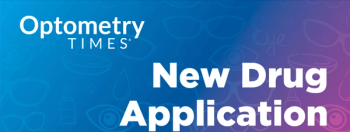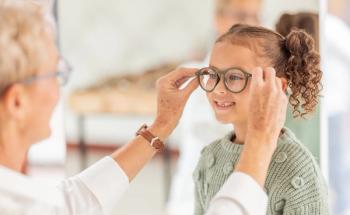
Using technology, medical informatics in patient education
Incorporating new technologies is a must for ODs to improve patient communication and education. Multiple platforms of communication are needed in the 21st century to communicate and educate patients of very different backgrounds.
Incorporating new technologies is a must for ODs to improve patient communication and education. Multiple platforms of communication are needed in the 21st century to communicate and educate patients of very different backgrounds. Internet-based communication has now become the primary modality for information exchange.1
Medicine and optometry must adjust its communication techniques and include technology into the clinical setting. Technology has enhanced the way in which health professionals communicate with each other and their patients. An excellent example is the
Previously from Dr. Wong:
ODs and other healthcare providers have taken a paternalistic view toward patient education. We have spoken with our patients and given them written information and brochures describing their diagnoses. We have also had our front desk staff, technicians, and opticians reinforce our discussions. If patients did not understand or follow our directives, we would argue that we did everything possible.
Did we really do everything to communicate with our patients or merely contribute to information overload?
Future patient communication and education should be more interactive-ensuring that patients understand their diagnoses. For patients to become better educated when they leave our chairs, ODs should utilize technology that improves the quality of our interaction with patients. New patient education websites and mobile apps are evolving. One example is the
Medical informatics
The contemporary field of medical informatics applies informatics theory and techniques to all areas of patient care, improving clinical decision-making, integrating patient education, and enabling clinical and scientific research.
An outstanding example of an organization that is a pioneer in medical informatics is the
Incorporating the practice of medical informatics and knowledge integration is essential to all aspects of modern healthcare delivery and is conducted through multidisciplinary research, development, and application.
Medical informatics has taught us that electronic health records (EHR) need to make our lives easier-not more difficult. For example, a GPS navigation system is valuable when it tells us where to turn when driving, not when it tells us after the fact that we should have turned. Future EHRs should help guide our clinical decision-making. Additional information on medical informatics can be found on the
What does this mean for optometry and primary eye care?
Evidence-based medicine can be implemented into patient education and treatment. If patients have access to reliable information in real time, they will be able to comprehend and comply with our directives.
ODs should take advantage of these existing means of communication. EHRs and software systems will allow for optimal collaboration between ODs and other healthcare providers. Optometric innovations may alter the way in which the exam is conducted and how patient information is relayed.
Medical technology information is designed to make our lives less complicated. Choosing technologies that are easy to update, maintain, and sync with other modalities or programs is fundamental to prudent purchasing decisions. When efficiently utilized, both EHR systems and automated optometric instruments can allow more time for patient education and discussion.
Related:
Internet answers
Virtual and augmented reality offers new frontiers in patient education through demonstration and virtual simulation. The challenge for ODs in the future will be sorting through all of these options, and utilizing strategically those that will most effectively educate patients.
Many patients today are receptive to computer simulations on screen to understand their refractive, binocular status, or ocular and medical conditions. Optical coherence tomography (OCT), retinal images, visual fields, corneal topography, and wavefront aberrometry are frequently shown to patients in order to describe conditions, explain treatment plans, and educate them about their ocular health.
Proper comprehension and an informative demonstration actively engage patients in their individualized care. The doctor-patient interaction is the most vital aspect of any exam, leading to improved outcomes and patient retention.2 The American Optometric Association has a long history of educating patients, parents, and teachers about eye and vision care
Eliminate language barriers
In today’s society, the ability to communicate with patients in multiple languages is becoming more critical to the success of all healthcare practice modalities.
While written and verbal language fluency is important, medical training in different languages is crucial to confirm that patients are given accurate information. Through the use of optometric simulations and technological displays, medical errors may be minimized and patient education maximized.
The success of social media today is partly due to the desire to be part of a community. Patient communication relies on understanding family and cultural dynamics, and how they relate to healthcare decisions. Social media has taken on a larger role in patient communication-especially as it relates to where people go for information.
Related:
Integrating technology with education
To prepare students for their future, optometric colleges and universities have an obligation to assimilate education with technology.
Colleges and universities should emphasize and integrate the changes in technology into the curriculum. By doing so, it will better prepare emerging students for a variety of optometric settings.
Differentiating your practice from others by improving patient education and communication are essential features of the modern eye care practice. Technology and the modern trend towards personalized medicine will continue to produce many future advancements in patient education.
References
1. The Kennedy Institute of Ethics. Conversations in Bioethics 2017: Disability. Available at: https://kennedyinstitute.georgetown.edu/cib/our-conversations/2017-disability/. Accessed 5/19/17.
2. Pellegrino, E. The Moral Foundations of the Patient–Physician Relationship: the Essence of Medical Ethics. Military Medical Ethics. 2003(1):3-21.
Newsletter
Want more insights like this? Subscribe to Optometry Times and get clinical pearls and practice tips delivered straight to your inbox.



















































.png)


